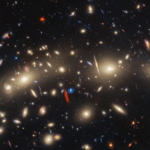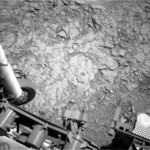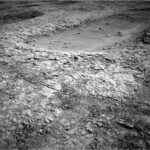The textbook picture of how planets form—serene, flat disks of cosmic dust—has just received a significant cosmic twist.
phys.org26- Page
University at Albany chemists have created a new high-energy compound that could revolutionize rocket fuel and make space flights more efficient. Upon ignition, the compound releases more energy relative to
On Aug. 7 and 8, NASA’s Nancy Grace Roman Space Telescope team assessed the observatory’s solar panels and a visor-like sunshade called the deployable aperture cover—two components that will be
SpaceX on Tuesday was once again gearing up for the latest launch of its Starship megarocket after two successive postponements.
Asteroids floating through our solar system are debris left over from when our planetary neighborhood formed 4.6 billion years ago. Scientists study these ancient fragments as time capsules that reveal
You know, if you think about it, and trust me we’re about to, the moon is kind of weird. Of all the terrestrial worlds of the solar system, we’re the
SpaceX is gearing up for the next test flight of its Starship megarocket on Monday after a technical issue on the launchpad forced a 24-hour delay.
Scientists have devised a new method for mapping the spottiness of distant stars by using observations from NASA missions of orbiting planets crossing their stars’ faces. The model builds on
Researchers at the University of Minnesota Twin Cities have made a new discovery by observing and analyzing the first new type of plasma wave in Jupiter’s aurora. This research helps
A research team led by Prof. Jiao Chengliang at the Yunnan Observatories of the Chinese Academy of Sciences, along with collaborators, has introduced a self-consistent model that addresses long-unresolved theoretical
-
 012024 in Review: Highlights from NASA in Silicon Valley
012024 in Review: Highlights from NASA in Silicon Valley -
 02Panasonic Leica Summilux DG 15mm f/1.7 ASPH review
02Panasonic Leica Summilux DG 15mm f/1.7 ASPH review -
 03How New NASA, India Earth Satellite NISAR Will See Earth
03How New NASA, India Earth Satellite NISAR Will See Earth -
 04And Thus Begins A New Year For Life On Earth
04And Thus Begins A New Year For Life On Earth -
 05Astronomy Activation Ambassadors: A New Era
05Astronomy Activation Ambassadors: A New Era -
06SpaceX launch surge helps set new global launch record in 2024
-
 07Space Force plans new ‘Futures Command’ amid pressure to speed up modernization
07Space Force plans new ‘Futures Command’ amid pressure to speed up modernization





